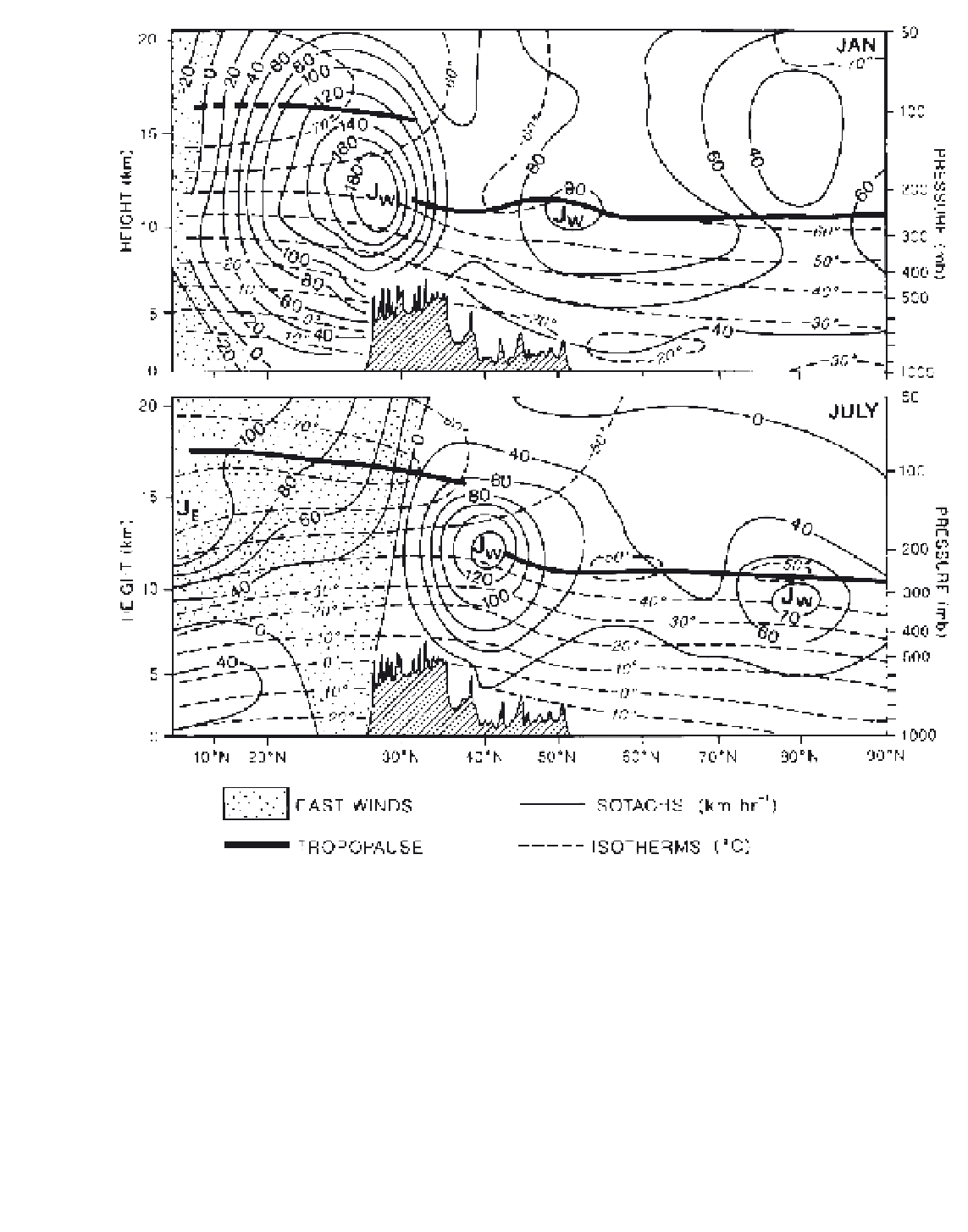Geoscience Reference
In-Depth Information
Figure 11.17
Distribution of wind velocity (km/hr) and temperature (°C) along the 90°E meridian for January and July, showing the
westerly jet streams (J
W
) and the tropopause. Note the variable intervals in the height and latitudinal scales.
Source
: After Pogosyan and Ugarova (1959), courtesy of
Meteorologiya Gidrologiya
(Moscow).
(Figure 11.17), to reunite again off the east coast of
China (Figure 11.18). The plateau, which exceeds 4000
m over a vast area, is a tropospheric cold source in
winter, particularly over its western part, although the
strength of this source depends on the extent and
duration of snow cover (snow-free ground acts as a heat
source for the atmosphere in all months). Below 600
mb, the tropospheric heat sink gives rise to a shallow,
cold plateau anticyclone, which is best developed in
December and January. The two jet stream branches
have been attributed to the disruptive effect of the
topographic barrier on the airflow, but this is limited to
altitudes below about 4 km. In fact, the northern jet is
highly mobile and may be located far from the Tibetan
Plateau. Two currents are also observed further west,
where there is no obstacle to the flow. The branch over
northern India corresponds to a strong latitudinal
thermal gradient (from November to April) and it is

